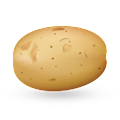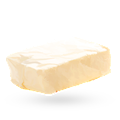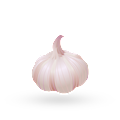MAIN INGREDIENTS
Aligot is a French dish which incorporates mashed potatoes, melted cheese, cream, and crushed garlic. This combination results in a creamy, elastic, and velvety mixture that is similar to fondue. The dish is a specialty of L'Aubrac, a region located in the south of France.
It is believed that aligot was invented by monks who lived in the regional monasteries and were often visited by pilgrims on their way to Santiago de Compostela, a pilgrimage site in the north of Spain. The original version included a combination of bread and cheese, but the dish got its final form in the 16th century, after the introduction of potatoes.
MAIN INGREDIENTS
This French classic is made by slow-roasting duck meat in its own fat. What was once used as a method of preserving meat in times before refrigeration is nowadays enjoyed as a rich and flavorful dish of its own. The meat is typically seasoned with salt, pepper, and fresh herbs and spices such as thyme and bay leaves.
Traditionally, duck confit is cooked in a copper pot over a fire for up to 24 hours, in order for the fat to render and cover the meat. After cooking, while still hot, the meat and the fat are poured into jars and sealed tightly so that the dish can be stored for later use.
Cabécou is a soft French cheese originating from the Midi-Pyrénées region. It is made from goat’s milk. Before it is wrapped in chestnut leaves and left to mature, the cheese is dipped in plum brandy and sprinkled with black pepper.
After about two weeks, blue mold develops on its thin rind. Cabécou’s texture is creamy and smooth, while its flavor is slightly tangy. It is recommended to pair it with a glass of Chardonnay.
Pair with
Tomme des Pyrénées is a semi-hard, cow's milk cheese from the Pyrénées region in France that must mature for at least 21 days before consumption. It is wrapped in a distinguishable black wax coating, which acts as a seal to prevent the air from coming in and thus stopping the maturation process.
Appreciated for its big, bold flavors, Tomme has a rubbery texture and buttery, salty, earthy taste with slight hints of sourness and undertones of mushrooms, garlic, onions, peanuts and beef bouillon that come forth once the cheese has melted in the mouth.
OTHER VARIATIONS OF Tomme
MAIN INGREDIENTS
Paillassons de courgettes is a traditional pancake or fritter that's especially popular in the south of the country, especially in Languedoc. It's usually made with a combination of zucchini, onions, eggs, flour, oil, salt, and pepper. The zucchinis are grated, salted, drained, and rinsed, while the onions are sautéed in oil until tender, and then mixed with the zucchinis.
A mixture of eggs, flour, salt, and black pepper is whisked into a batter that's mixed with the onions and zucchinis, and it's then dropped by spoonfuls into a large pan with heated oil in it. The pancakes are flattened with a spoon and fried over medium heat on both sides until golden, but not brown.
Roquefort is one of the greatest cheeses of France, made from full-fat, unpasteurized sheep's milk. It has blue veins dispersed throughout its body, developed from the spores of Penicillium roqueforti before the cheese is pressed.
It is so tasty and loved that it was a favorite of Emperor Charlemagne, and it is locally called the 'cheese of kings and popes'. Roquefort has a moist rind on the exterior, while on the inside it is crumbly in texture and creamy, tangy, intense, complex, sharp, and salty in terms of flavor, with a white paste marbled with blue mold.
Pair with
MAIN INGREDIENTS
This traditional Toulouse sausage consists of coarsely minced pork, with the only other additions being salt and pepper. It first appeared in the 18th century, and nowadays it is a hallmark product that is usually sold rolled in a coil at traditional markets in Toulouse.
The sausage is commonly used in cassoulets, but it can also be grilled, braised, or fried, then served alongside mashed potatoes and braised vegetables.
Bleu des Causses is a traditional blue cheese made from unpasteurized cow's milk. The cheese is placed in a cave, which is under the influence of drafts of cold and damp air, providing a unique maturation process that lasts for at least 70 days.
Because of the air gusts in the cave, and due to the fact that the cheese is pricked with needles, Penicillium mold forms inside the cheese. Bleu des Causses is neither pressed nor cooked and its flavor is full, intense, salty, and spicy (because of the mold), while the texture is crumbly and creamy.
Laguiole is a semi-soft, aromatic cheese made from raw, whole-cream cow's milk, with a thick light orange rind that turns light brown as it matures. Interestingly, the rind is so important that it is prohibited to sell grated Laguiole, and each piece of the cheese must come with a piece of its rind.
It was first made by monks in a local monastery, who then gave the recipe to the mountain farmers. The maturation takes at least four months at a temperature lower than 14 °C. Laguiole possesses a creamy, rich texture on the inside that instantly melts in the mouth, providing a sharp, slightly sour taste.
Rocamadour is a small, flat, very soft cheese made from raw goat's milk. The cheese has a natural edible rind. It's named after the village of Rocamadour in the French region of Lot. The cheese matures for about 15 days, but it can be left to mature a few months more to develop a stronger, sharper flavor.
It weighs only 35 grams, and its flavor is nutty, fresh, and creamy. Young Rocamadour goes well on hot toasts, and it can be used in salads or paired with dry white wines, while mature Rocamadour is usually eaten at the end of a meal, and it's reccomended to pair it with full-bodied red wines.
TasteAtlas food rankings are based on the ratings of the TasteAtlas audience, with a series of mechanisms that recognize real users and that ignore bot, nationalist or local patriotic ratings, and give additional value to the ratings of users that the system recognizes as knowledgeable. TasteAtlas Rankings should not be seen as the final global conclusion about food. Their purpose is to promote excellent local foods, instill pride in traditional dishes, and arouse curiosity about dishes you haven’t tried.






































